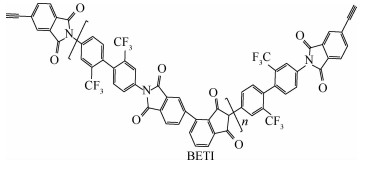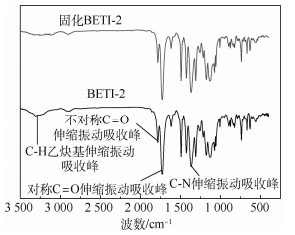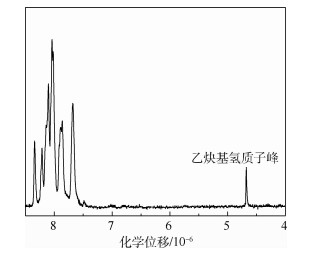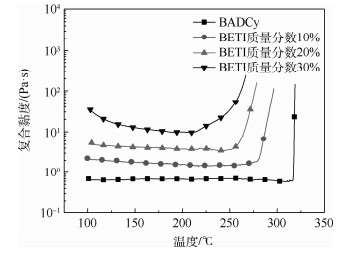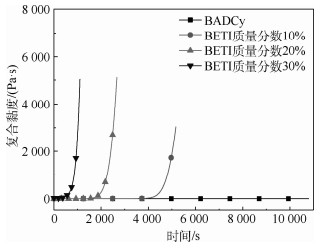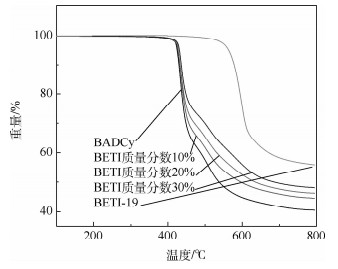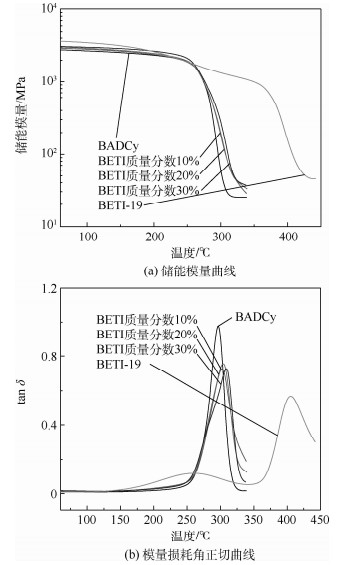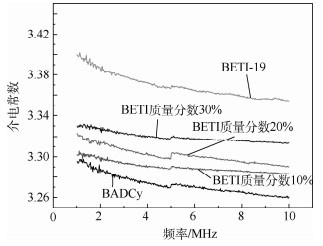Research development of fatigue life prediction and damage analysis model of fiber-reinforced composite
-
摘要:
随着纤维增强复合材料主承力结构在多领域内的广泛应用,疲劳成为复合材料结构设计必须面对的问题,出现了大量用于复合材料结构疲劳寿命预测及损伤演化的分析模型与方法。目前的复合材料疲劳性能分析模型可以分为疲劳寿命模型、唯象模型和渐进损伤模型。对这3类模型的发展情况进行了综述和对比分析。其中,疲劳寿命模型原理相对简单,适用于工程结构的寿命估算;唯象模型建立了材料剩余强度/刚度与循环数的数学关系,可以预测结构的寿命与材料剩余力学性能;渐进损伤模型不仅可以预测结构寿命和材料剩余力学性能,还能分析结构疲劳损伤机理。对各类疲劳性能分析模型的发展趋势进行了讨论。指出了降低实施成本和提高通用型是各类疲劳性能分析模型有待解决的问题。
Abstract:With the wide application of fiber-reinforced composite primary structures in many fields, fatigue has become a critical problem in composite structural design and analysis. Based on the development of fatigue theory of composite materials, many theoretical methods and numerical models for life prediction and damage analysis have been proposed by scholars. The current composite fatigue performance analysis models can be classified as fatigue life model, phenomenological model and progressive damage model. The development of these three kinds of models is reviewed and compared and their advantages and disadvantages are analyzed. The theory of fatigue life model is relatively simple, and the model is suitable for the life estimation of engineering structures. The mathematical relationship between residual strength/stiffness and fatigue cycle number is established in phenomenological model, which can predict the structure fatigue life and material residual mechanical properties. The progressive damage model can not only predict the structure fatigue life and material residual mechanical properties, but also analyze the fatigue damage mechanism of structures. Finally, the development trends of these fatigue performance analysis models are discussed. It is pointed out that reducing the implementation cost and improving the generality are important problems of these models.
-
Key words:
- composites /
- fatigue /
- life prediction /
- phenomenological models /
- progressive damage
-
氰酸酯(BADCy)是一类性能优异的热固性树脂,具有较高的玻璃化转变温度和力学性能, 较低的介电常数和介电损耗, 吸湿率低,固化过程无副产物释放, 与各种增强材料的相容性好。因此,氰酸酯作为一种高性能基体树脂在航空航天和微电子等领域得到了广泛的应用。在氰酸酯的分子结构中,苯环和三嗪环之间有一个柔性醚键,使其具有比其他热固性树脂更高的冲击强度,但仍不能满足高性能基体树脂对韧性的要求,通常需要对其进行增韧改性[1-2]。此外,要达到复合材料所需的固化度,纯氰酸酯需要在高温条件下进行长时间的固化,能耗大、工艺成本高,而且会对复合材料的力学性能产生不利的影响。加入金属络合物和小分子酚类助催化剂会降低氰酸酯的固化温度,但同时也会降低其介电性能和热性能[3-4]。因此,在保持氰酸酯优异的力学﹑热学和介电性能的前提下,使氰酸酯同时具有良好的韧性和加工性,是非常具有挑战性的。
与热塑性树脂共混是一种非常有效的对氰酸酯增韧改性的方法。例如,羧基或胺基封端的丁腈橡胶是良好的增韧剂量,Feng等[5]加入10%羧基封端的丁腈橡胶使氰酸酯固化物的冲击强度提高了200%。但是,这类增韧剂由于自身较低的模量和玻璃化转变温度,最终导致氰酸酯固化物的力学和热学性能显著降低。为了克服这种不足,各种高分子量工程塑料如聚醚砜﹑聚苯醚﹑聚醚酰亚胺﹑聚醚醚酮和聚酰亚胺等[6-10],被广泛用于氰酸酯的增韧改性。然而,高分子量工程塑料的加入,会导致氰酸酯树脂的黏度急剧升高,严重影响树脂的加工性能,还会降低树脂对纤维表面的浸润性,影响最终的界面性能。
通过与热固性树脂(如环氧树脂﹑双马来酰亚胺树脂以及聚酰亚胺树脂等)共混形成互穿网络聚合物(Interpenetrating Polymer Network, IPN)是另一种有效的氰酸酯增韧方法。环氧树脂可以与氰酸酯发生共聚反应生成噁唑啉酮环,而环氧树脂中的羟基可以明显催化氰酸酯的聚合,降低固化温度,但环氧树脂自身的综合性能比氰酸酯低,将导致固化产物的玻璃化转变温度、热稳定性和介电性能等明显降低[11-12]。双马来酰亚胺-氰酸酯(BT树脂)可以同时结合两者的优点,具有良好的加工性能、较高的玻璃化转变温度、较低的介电常数和损耗等,但是BT树脂的韧性比纯氰酸酯还低,因为双马来酰亚胺树脂的交联密度更大,性能更脆[13-14]。此外,乙炔基或苯乙炔基封端的热固性聚酰亚胺与氰酸酯的共混研究也有相关报道,Meier等[15]将酚醛型氰酸酯与苯乙炔基封端的聚酰亚胺共混,最终固化物的热学性能与纯氰酸酯相差不大,韧性也只有小幅度的提高。因为苯乙炔基的交联温度过高,需要到370℃,而氰酸酯只要200℃,两者相差太大,导致苯乙炔基的固化过程中链段运动受限制,固化不完全。曲春艳等[16]采用基于乙炔基封端的酰亚胺低聚物与氰酸酯进行共混,由于低聚物的聚合度为2,固化产物交联密度太大,且发生了宏观相分离,致使最终固化产物的玻璃化转变温度、拉伸强度和韧性等没有明显的改善。
本文合成了不同聚合度的乙炔基封端的聚酰亚胺低聚物(BETI),将这种低聚物溶于氰酸酯单体,对改性树脂的固化行为进行了详细探究,对固化产物热学性能、力学性能和介电性能等进行了表征与分析。
1. 实验
1.1 实验原料及试剂
实验所用原料及试剂如表 1所示。
表 1 实验原料及试剂Table 1. Experimental materials and reagents名称 来源 纯化方法 2, 3, 3′, 4′-联苯四甲酸二酐(3, 4-BPDA) 常州阳光药业有限公司 真空熔融 2, 2′-双(三氟甲基)-4′, 4′-联苯二胺(TFMB) 常州阳光药业有限公司 直接使用 4-乙炔基邻苯二甲酸酐(EPA) 瑞典Nexam Chemical公司 直接使用 双酚A型氰酸酯单体(BADCy) 扬州天启新材料有限公司 直接使用 间甲酚 天津市富宇精细化学有限公司 直接使用 无水乙醇 北京化工厂 直接使用 1.2 实验测试仪器及测试条件
红外光谱分析:样品的FTIR谱图采用VERTEX 70型傅里叶变换红外光谱仪在室温下进行测定,样品以粉末形式,采用透过模式。
核磁共振波谱分析:低聚物的1H NMR谱图由Bruker-400型核磁共振波谱仪在室温下测定,四甲基硅烷TMS为内标,低聚物由DMSO-d6溶解。
流变性能分析:采用美国TA公司AR2000ex高级扩展流变仪对低聚物的流变性能进行测试表征,应变为5%,角频率为10 Hz,采用振荡模式,进行恒温和变温测试。
热稳定性分析:采用美国TA公司Q50型热重分析仪对树脂样品的热稳定性进行测试分析,测试温度范围为100~800 ℃,升温速率10 ℃/min,N2氛围。
动态热机械分析:采用美国TA公司Q800型动态热机械分析仪对树脂样品的动态机械性能进行测试分析,升温速率3 ℃/min,频率为1 Hz,单悬臂模式。
力学性能分析:采用美国Instron公司的5982电子万能材料试验机,按GB/T 1040.1—2018对树脂浇铸体的拉伸性能进行测试,加载速率为2 mm/min。树脂样品的冲击强度则采用中国长春JJ-20型计算机控制记忆式冲击试验机进行测试,按GB/T 1843—2008标准。
介电性能分析:采用美国Agilent Technologies公司的4294A阻抗分析仪对树脂的介电常数进行测试分析,测试范围为常温低频段。
1.3 热固性聚酰亚胺低聚物的制备
以二酐单体3, 4′-BPDA,聚合度19的BETI的制备为例:将3, 4-BPDA (27.951 g, 0.095 mol)、TFMB(32.023 g, 0.100 mol)、EPA(1.721 g, 0.01 mol)和500 mL间甲酚加入到带有机械搅拌和分水器的1 L三口瓶中,在N2氛围下80 ℃反应10 h,180 ℃反应12 h,反应过程中加大N2流量,将副产物吹出反应体系外。反应完后,冷却到室温,将黏稠的间甲酚溶液倒入3 L无水乙醇中过滤,用乙醇洗涤6次,置于索氏提取器中,以乙醇为溶剂,索氏提取48 h,真空下,180 ℃烘干,得到浅白色粉末67.4 g,产率为93.2%。其他不同聚合度的BETI的制备方法同上。
1.4 聚酰亚胺树脂改性氰酸酯树脂及浇铸体制备
将氰酸酯粉末加入到烧杯中,100 ℃下融化成透明液体,再将BETI按一定质量分例(10%、20%、30%)加入到氰酸酯中,持续搅拌至均匀透亮液体,浇入到模具中;在120 ℃真空条件下,脱气1 h,移至平板硫化机上,然后按150 ℃/3 h+170 ℃/2 h+190 ℃/2 h+230 ℃/2 h的工艺进行固化;再降温至150 ℃左右脱模,得到不同质量分数(10%、20%、30%)的BETI改性氰酸酯树脂浇铸体,再按测试标准裁剪样条进行测试表征。当BETI质量分数超过30%时,只能部分溶解,而且混合物体系黏度过大,工艺性变差,影响浇铸体的制备和性能,因此未继续加大BETI含量。
2. 结果与讨论
2.1 聚酰亚胺低聚物和固化产物的制备与表征
以乙炔基为末端基团的BETI采用间甲酚为溶剂通过传统的一步法制备,其结构式如图 1所示。通过红外光谱和核磁谱对其结构进行了表征,其中以聚合度2的BETI-2低聚物进行分析。如图 2 FTIR图谱所示,在1 780 cm-1(C=O的不对称伸缩振动吸收峰)、1 730 cm-1(C=O的对称伸缩振动吸收峰)和1 370 cm-1(C-N的伸缩振动吸收峰)附近出现了酰亚胺基团的特征吸收峰;在3 300 cm-1(C-H的伸缩振动吸收峰)附近出现了乙炔基特征吸收峰。如图 3 1H NMR图谱所示,在化学位移为4.7×10-6左右均出现BETI-2低聚物的乙炔基氢质子峰。
BADCy和不同分子量的BETI固化物的玻璃化转变温度和冲击强度如表 2所示。可知,BETI系列固化物的玻璃化转变温度随着聚合度的增大而降低,而冲击强度随着聚合度的增大而升高。当聚合度越低时,固化后产物的交联密度越高,交联网格中的分子链段越短,自由体积越小,运动能力越低,故玻璃化转变温度越高,韧性越低。由于BETI-2和BETI-9本身固化物的冲击强度较低,可以预见其引入很难大幅提升氰酸酯树脂的韧性,而BETI-19固化物的冲击强度远高于纯氰酸酯树脂。继续增大BETI的分子量则会造成端基含量过低,固化过程中乙炔基交联不完全,固化物的热性能和力学性能反而会降低。因此,本文主要采用BETI-19对氰酸酯树脂进行增韧。
表 2 BADCy和BETI固化物的波璃化转变温度和冲击强度Table 2. Glass transition temperature and impact strength of BADCy and BETI固化物 玻璃化转变温度/℃ 冲击强度/(kJ·m-2) BADCy 297 24 BETI-2 441 18 BETI-9 422 26 BETI-19 394 46 2.2 聚酰亚胺低聚物与氰酸酯共混物流变分析
BADCy和BADCy/BETI-19的黏度-温度曲线如图 4所示。可知,随着温度的升高,树脂的复合黏度先降低后升高,在150~250 ℃之间,黏度值维持在20 Pa·s以下,有一个较宽的加工窗口,在制备复合材料过程中有利于对纤维表面的浸润。随着聚酰亚胺加入量的增多,凝胶温度明显降低,避免了过高固化温度带来的高成本以及对复合材料性能的负面影响。
BADCy和BADCy/BETI-19在200 ℃的黏度-时间曲线如图 5所示。可知,即使在200 ℃恒温3 h的条件下,纯氰酸酯黏度也没有明显增长,但加入BETI后,固化速率显著提高,且随着BETI加入量的增多,凝胶时间明显缩短,证明了BETI对氰酸酯聚合的催化作用。
2.3 固化物的热稳定性分析
BADCy、BETI-19及BADCy/BETI-19固化物的TGA曲线如图 6所示。可知,BADCy和BETI-19两种树脂固化物的热失重5%时温度分别为425 ℃和564 ℃。主要是因为双酚A型氰酸酯中含有异丙基和三嗪环,在超过400 ℃就开始发生降解,且结构中含有醚键,故热失重温度较低。而BETI-19树脂分子结构中主要含有刚性的骨架结构,耐温等级高,从而具有良好的热稳定性。而BADCy/BETI-19互穿网络聚合物的热失重5%时温度都与纯氰酸酯的固化物相差不多,均在430 ℃左右,主要是因为共混物的降解过程是两者分别降解,最先降解的都是氰酸酯中的异丙基和三嗪环。
2.4 固化物动态机械性能分析
BADCy、BETI-19及BADCy/BETI-19固化物的DMA曲线如图 7所示。可知,BADCy和BETI-19两种树脂固化物的玻璃化转变温度分别为297 ℃和394 ℃,主要是因为聚酰亚胺主链具有刚性的骨架结构和较强的分子间和分子内作用力。BADCy/BETI-19互穿网络聚合物的储能模量和玻璃化转变温度随聚酰亚胺BETI-19的加入量增多而增大。同时,所有聚合物均具有单一的tan δ峰(δ为模量损耗角),证明互穿网络聚合物未发生明显的相分离。
2.5 固化物力学性能分析
BADCy、BETI-19及BADCy/BETI-19固化物的热和力学性能如表 3所示。可知,BETI-19固化物IPN-10、IPN-20、IPN-30的冲击强度比纯氰酸酯高2倍,向氰酸酯中加入10%、20%和30%的BETI-19后,互穿网络聚合物的冲击强度较纯氰酸酯分别提高了4%、13%和29%。互穿网络聚合物韧性的提高主要归因于聚酰亚胺自身的韧性比氰酸酯高,且聚酰亚胺的混入降低了氰酸酯的交联密度,而分子结构中含有的三氟甲基,降低了分子链的堆积密度,增加了自由体积。此外,互穿网络聚合物的拉伸性能也较纯氰酸酯有所提高,因为引入的聚酰亚胺树脂,其拉伸性能比氰酸酯高,且与氰酸酯固化后形成了互穿网络结构,分子链间的交错互穿和紧密缠结使分子间的作用力增强,从而使拉伸性能得到提高。
表 3 BADCy、BETI-19及其共混固化物热和力学性能Table 3. Thermal and mechanical properties of BADCy, BETI-19 and their blends固化物 玻璃化转变温度/℃ 拉伸强度/MPa 拉伸模量/GPa 断裂伸长率/% 冲击强度/ (kJ·m-2) BADCy 297 76 3.0 2.9 24 IPN-10 303 78 3.2 3.0 25 IPN-20 305 86 3.4 3.3 27 IPN-30 309 94 3.5 3.4 31 BETI-19 394 101 3.8 3.5 46 2.6 固化物介电性能分析
BADCy、BETI-19及BADCy/BETI-19固化物的介电常数-频率曲线如图 8所示。可知,氰酸酯、聚酰亚胺及互穿网络聚合物的介电常数都随频率增加而略有降低,主要归因于高频时,聚合物的极化程度不再有时间达到静态电场值,从而使极化率减小,介电常数降低。由于BETI-19的介电常数高于BADCy,故互穿网络聚合物的介电常数也比纯氰酸酯略高,但增加幅度不大,仍能保证氰酸酯优异的介电性能。
3. 结论
1) 当溶于氰酸酯单体中的BETI聚合度为19时,BETI的增韧效果明显。
2) 乙炔基上的氢原子对氰酸酯的聚合有明显的催化效果,随着BETI加入量的增多,凝胶温度降低、凝胶时间缩短。同纯氰酸酯固化物相比,基于氰酸酯和BETI的互穿网络聚合物的热性能都有一定的提高。
3) 当加入质量分数30%的BETI-19,固化物的玻璃化转变温度从297 ℃提高到309 ℃,5%热失重温度从425 ℃提高到了431 ℃;拉伸强度从76 MPa提高到了94 MPa,冲击强度从24 kJ/m2提高到了31 kJ/m2。
4) 由于BETI固化物本身的介电常数较高,BETI增韧后的互穿网络聚合物介电常数比纯氰酸酯略高,但增加幅度不大,有望作为基体树脂在航空航天等领域获得应用。
-
-
[1] ROUCHON J, BOS M. Fatigue and damage tolerance evaluation of structures: The composite materials response: NLR-TP-2009-221[R]. Amsterdam: NLR, 2009. [2] BATHIAS C. An engineering point of view about fatigue of polymer matrix composite materials[J]. International Journal of Fatigue, 2006, 28(10): 1094-1099. doi: 10.1016/j.ijfatigue.2006.02.008 [3] ANSARI M T A, SINGH K K, AZAM M S. Fatigue damage analysis of fiber-reinforced polymer composites-A review[J]. Journal of Reinforced Plastics and Composites, 2018, 37(9): 636-654. doi: 10.1177/0731684418754713 [4] BROD M, JUST G, DEAN A, et al. Numerical modelling and simulation of fatigue damage in carbon fibre reinforced plastics at different stress ratios[J]. Thin Walled Structures, 2019, 139: 219-231. doi: 10.1016/j.tws.2019.03.005 [5] VASSILOPOULOS A P. Fatigue life modeling and prediction methods for composite materials and structures-Past, present, and future prospects[M]//VASSILOPOULOS A P. Fatigue life prediction of composites and composite structures. Amsterdam: Elsevier, 2020: 1-43. [6] VASSILOPOULOS A P. The history of fiber-reinforced polymer composite laminate fatigue[J]. International Journal of Fatigue, 2020, 134: 105512. doi: 10.1016/j.ijfatigue.2020.105512 [7] BAK B L, SARRADO C, TURON A, et al. Delamination under fatigue loads in composite laminates: A review on the observed phenomenology and computational methods[J]. Applied Mechanics Reviews, 2014, 66(6): 060803. doi: 10.1115/1.4027647 [8] PASCOE J A, ALDERLIESTEN R C, BENEDICTUS R. Methods for the prediction of fatigue delamination growth in composites and adhesive bonds-A critical review[J]. Engineering Fracture Mechanics, 2013, 112-113: 72-96. doi: 10.1016/j.engfracmech.2013.10.003 [9] 翟洪军, 姚卫星. 纤维增强树脂基复合材料的疲劳剩余刚度研究进展[J]. 力学进展, 2002, 32(1): 69-80. doi: 10.3321/j.issn:1000-0992.2002.01.006ZHAI H J, YAO W X. A survey on stiffness reduction models of fiber reinforced plastics under cyclic loading[J]. Advances in Mechanics, 2002, 32(1): 69-80(in Chinese). doi: 10.3321/j.issn:1000-0992.2002.01.006 [10] HASHIN Z, ROTEM A. A fatigue failure criterion for fiber reinforced materials[J]. Journal of Composite Materials, 1973, 7(4): 448-464. doi: 10.1177/002199837300700404 [11] REIFSNIDER K, GAO Z. A micromechanics model for composites under fatigue loading[J]. International Journal of Fatigue, 1991, 13(2): 149-156. doi: 10.1016/0142-1123(91)90007-L [12] PHILIPPIDIS T P, VASSILOPOULOS A P. Fatigue strength prediction under multiaxial stress[J]. Journal of Composite Materials, 1999, 33(17): 1578-1599. doi: 10.1177/002199839903301701 [13] FAWAZ Z, ELLYIN F. Fatigue failure model for fibre-reinforced materials under general loading conditions[J]. Journal of Composite Materials, 1994, 28(15): 1432-1451. doi: 10.1177/002199839402801503 [14] BRØNDSTED P, ANDERSEN S, LILHOLT H. Fatigue damage accumulation and lifetime prediction of GFRP materials under block loading and stochastic loading[C]//Proceedings of the 18th Risø International Symposium on Materials Science, 1997: 269-278. [15] VASSILOPOULOS A P, MANSHADI B D, KELLER T. Influence of the constant life diagram formulation on the fatigue life prediction of composite materials[J]. International Journal of Fatigue, 2010, 32(4): 659-669. doi: 10.1016/j.ijfatigue.2009.09.008 [16] PHILIPPIDIS T P, VASSILOPOULOS A P. Life prediction methodology for GFRP laminates under spectrum loading[J]. Composites Part A: Applied Science and Manufacturing, 2004, 35(6): 657-666. doi: 10.1016/j.compositesa.2004.02.009 [17] HARRIS B. A parametric constant-life model for prediction of the fatigue lives of fibre-reinforced plastics[M]//HARRIS B. Fatigue in composites. Amsterdam: Elsevier, 2003: 546-568. [18] KAWAI M, KOIZUMI M. Nonlinear constant fatigue life diagrams for carbon/epoxy laminates at room temperature[J]. Composites Part A: Applied Science and Manufacturing, 2007, 38(11): 2342-2353. doi: 10.1016/j.compositesa.2007.01.016 [19] BOERSTRA G. The multislope model: A new description for the fatigue strength of glass fibre reinforced plastic[J]. International Journal of Fatigue, 2007, 29(8): 1571-1576. doi: 10.1016/j.ijfatigue.2006.11.007 [20] KASSAPOGLOU C. Fatigue life prediction of composite structures under constant amplitude loading[J]. Journal of Composite Materials, 2007, 41(22): 2737-2754. doi: 10.1177/0021998307078735 [21] PARK T, KIM M, JANG B, et al. A nonlinear constant life model for the fatigue life prediction of composite structures[J]. Advanced Composite Materials, 2014, 23(4): 337-350. doi: 10.1080/09243046.2013.871172 [22] VASSILOPOULOS A P, GEORGOPOULOS E F, KELLER T. Comparison of genetic programming with conventional methods for fatigue life modeling of FRP composite materials[J]. International Journal of Fatigue, 2008, 30(9): 1634-1645. doi: 10.1016/j.ijfatigue.2007.11.007 [23] VASSILOPOULOS A P, KELLER T. Modeling of the fatigue life of adhesively-bonded FRP joints with genetic programming[C]//Proceedings of the 17th International Conference on Composite Materials, 2009: 27-31. [24] ZHOU C, ZHOU S, PENG Y, et al. Study on the fatigue modeling of FRP composite materials[C]//Proceedings of the 5th International Conference on Energy and Environmental Protection, 2016: 763-767. [25] VASSILOPOULOS A P, GEORGOPOULOS E F, DIONYSOPOULOS V. Artificial neural networks in spectrum fatigue life prediction of composite materials[J]. International Journal of Fatigue, 2007, 29(1): 20-29. doi: 10.1016/j.ijfatigue.2006.03.004 [26] AL-ASSADI M, EL KADI H A, DEIAB I M. Using artificial neural networks to predict the fatigue life of different composite materials including the stress ratio effect[J]. Applied Composite Materials, 2011, 18(4): 297-309. doi: 10.1007/s10443-010-9158-7 [27] AL-ASSADI M, EL KADI H A, DEIAB I M. Predicting the fatigue life of different composite materials using artificial neural networks[J]. Applied Composite Materials, 2010, 17(1): 1-14. doi: 10.1007/s10443-009-9090-x [28] VASSILOPOULOS A P, BEDI R. Adaptive neuro-fuzzy inference system in modelling fatigue life of multidirectional composite laminates[J]. Computational Materials Science, 2008, 43(4): 1086-1093. doi: 10.1016/j.commatsci.2008.02.028 [29] JARRAH M, AL-ASSAF Y, KADI H E. Neuro-fuzzy modeling of fatigue life prediction of unidirectional glass fiber/epoxy composite laminates[J]. Journal of Composite Materials, 2002, 36(6): 685-700. doi: 10.1177/0021998302036006176 [30] VASSILOPOULOS A P. Residual strength fatigue theories for composite materials[M]//VASSILOPOULOS A P. Fatigue life prediction of composites and composite structures. Amsterdam: Elsevier, 2020: 79-101. [31] D'AMORE A, GIORGIO M, GRASSIA L. Modeling the residual strength of carbon fiber reinforced composites subjected to cyclic loading[J]. International Journal of Fatigue, 2015, 78: 31-37. doi: 10.1016/j.ijfatigue.2015.03.012 [32] BROUTMAN L, SAHU S. A new theory to predict cumulative fatigue damage in fiberglass reinforced plastics[C]//Composite materials: Testing and Design(Second Conference), 1972: 170-188. [33] HALPIN J C, JERINA K L, JOHNSON T A. Characterization of composites for the purpose of reliability evaluation: STP36479S[R]. West Conshohocken: ASTM International, 1973. [34] YANG J N, LIU M. Residual strength degradation model and theory of periodic proof tests for graphite/epoxy laminates[J]. Journal of Composite Materials, 1977, 11(2): 176-203. doi: 10.1177/002199837701100205 [35] YANG J, JONES D. Fatigue of graphite/epoxy[0/90/45/-45]S laminates under dual stress levels[J]. Journal of Composites, Technology and Research, 1982, 4(3): 63-70. doi: 10.1520/CTR10864J [36] DICK T, JAR P Y, CHENG J J. Prediction of fatigue resistance of short-fibre-reinforced polymers[J]. International Journal of Fatigue, 2009, 31(2): 284-291. doi: 10.1016/j.ijfatigue.2008.08.011 [37] D'AMORE A, CAPRINO G, STUPAK P, et al. Effect of stress ratio on the flexural fatigue behaviour of continuous strand mat reinforced plastics[J]. Science and Engineering of Composite Materials, 1996, 5(1): 1-8. doi: 10.1515/SECM.1996.5.1.1 [38] DIAO X, YE L, MAI Y W. A statistical model of residual strength and fatigue life of composite laminates[J]. Composites Science and Technology, 1995, 54(3): 329-336. doi: 10.1016/0266-3538(95)00060-7 [39] YAO W, HIMMEL N. A new cumulative fatigue damage model for fibre-reinforced plastics[J]. Composites Science and Technology, 2000, 60(1): 59-64. doi: 10.1016/S0266-3538(99)00100-1 [40] HOSOI A, KAWADA H, YOSHINO H. Fatigue characteristics of quasi-isotropic CFRP laminates subjected to variable amplitude cyclic two-stage loading[J]. International Journal of Fatigue, 2006, 28(10): 1284-1289. doi: 10.1016/j.ijfatigue.2006.02.039 [41] D'AMORE A, GRASSIA L. Constitutive law describing the strength degradation kinetics of fibre-reinforced composites subjected to constant amplitude cyclic loading[J]. Mechanics of Time-Dependent Materials, 2016, 20(1): 1-12. doi: 10.1007/s11043-015-9281-9 [42] JOHN T, WARUNA S. Determining the fatigue life of composites aircraft structures using life and load-enhancement factors: DOT/FAA/AR-10/6[R]. Washington, D.C. : FAA, 2011. [43] SENDECKYJ G P. Life prediction for resin-matrix composite materials[M]. Amsterdam: Elsevier, 1991: 431-483. [44] KASSAPOGLOU C. Fatigue model for composites based on the cycle-by-cycle probability of failure: Implications and applications[J]. Journal of Composite Materials, 2011, 45(3): 261-277. doi: 10.1177/0021998308104357 [45] SENDECKYJ G P. Fitting models to composite materials fatigue data: STP29314S[R]. West Conshohocken: ASTM International, 1981. [46] HWANG W, HAN K S. Fatigue of composites-fatigue modulus concept and life prediction[J]. Journal of Composite Materials, 1986, 20(2): 154-165. doi: 10.1177/002199838602000203 [47] ECHTERMEYER A T, ENGH B, BUENE L. Lifetime and Young's modulus changes of glass/phenolic and glass/polyester composites under fatigue[J]. Composites, 1995, 26(1): 10-16. doi: 10.1016/0010-4361(94)P3624-A [48] SIDOROFF F, SUBAGIO B. Fatigue damage modelling of composite materials from bending tests[C]//6th International Conference on Composite Materials (ICCM-VI) & Second European Conference on Composite Materials (ECCM-Ⅱ), 1987, 4: 32-39. [49] VAN PAEPEGEM W, DEGRIECK J. Simulating damage and permanent strain in composites under in-plane fatigue loading[J]. Computers & Structures, 2005, 83(23-24): 1930-1942. [50] VIEILLEVIGNE S, JEULIN D, RENARD J, et al. Modelling of the fatigue behaviour of a unidirectional glass epoxy composite submitted to fatigue loadings[C]//Proceedings of the International Conference on Fatigue of Composites, 1997: 424-430. [51] KAWAI M, YAJIMA S, HACHINOHE A, et al. High-temperature off-axis fatigue behaviour of unidirectional carbon-fibre-reinforced composites with different resin matrices[J]. Composites Science and Technology, 2001, 61(9): 1285-1302. doi: 10.1016/S0266-3538(01)00027-6 [52] KAWAI M, YAJIMA S, HACHINOHE A, et al. Off-axis fatigue behavior of unidirectional carbon fiber-reinforced composites at room and high temperatures[J]. Journal of Composite Materials, 2001, 35(7): 545-576. doi: 10.1177/002199801772662073 [53] KAWAI M, TANIGUCHI T. Off-axis fatigue behavior of plain weave carbon/epoxy fabric laminates at room and high temperatures and its mechanical modeling[J]. Composites Part A: Applied Science and Manufacturing, 2006, 37(2): 243-256. doi: 10.1016/j.compositesa.2005.07.003 [54] YANG J, JONES D, YANG S, et al. A stiffness degradation model for graphite/epoxy laminates[J]. Journal of Composite Materials, 1990, 24(7): 753-769. doi: 10.1177/002199839002400705 [55] WU W F, LEE L, CHOI S T. A study of fatigue damage and fatigue life of composite laminates[J]. Journal of Composite Materials, 1996, 30(1): 123-137. doi: 10.1177/002199839603000108 [56] 程小全, 邹健, 杨琨, 等. 缝合复合材料层合板疲劳寿命预测[J]. 失效分析与预防, 2008, 3(4): 8-11. doi: 10.3969/j.issn.1673-6214.2008.04.002CHENG X Q, ZOU J, YANG K, et al. Fatigue life prediction model for stitched composite laminates[J]. Failire Analysis and Prevention, 2008, 3(4): 8-11(in Chinese). doi: 10.3969/j.issn.1673-6214.2008.04.002 [57] 王丹勇, 温卫东. 复合材料单钉接头疲劳累积损伤破坏分析[J]. 复合材料学报, 2008, 25(1): 173-179. doi: 10.3321/j.issn:1000-3851.2008.01.029WANG D Y, WEN W D. Fatigue progressive damage analysis of single fastener joints in composite laminates[J]. Acta Materiae Compositae Sinica, 2008, 25(1): 173-179(in Chinese). doi: 10.3321/j.issn:1000-3851.2008.01.029 [58] DORMOHAMMDI S, GODINES C, ABDI F, et al. Damage-tolerant composite design principles for aircraft components under fatigue service loading using multi-scale progressive failure analysis[J]. Journal of Composite Materials, 2017, 51(15): 2181-2202. doi: 10.1177/0021998317691812 [59] WHITWORTH H. A stiffness degradation model for composite laminates under fatigue loading[J]. Composite Structures, 1997, 40(2): 95-101. doi: 10.1016/S0263-8223(97)00142-6 [60] VAN PAEPEGEM W, DEGRIECK J. A new coupled approach of residual stiffness and strength for fatigue of fibre-reinforced composites[J]. International Journal of Fatigue, 2002, 24(7): 747-762. doi: 10.1016/S0142-1123(01)00194-3 [61] WU F, YAO W. A fatigue damage model of composite materials[J]. International Journal of Fatigue, 2010, 32(1): 134-138. doi: 10.1016/j.ijfatigue.2009.02.027 [62] SHIRI S, YAZDANI M, POURGOL-MOHAMMAD M. A fatigue damage accumulation model based on stiffness degradation of composite materials[J]. Materials & Design, 2015, 88: 1290-1295. [63] PIDAPARTI R M, VOGT A. Experimental investigation of Poisson's ratio as a damage parameter for bone fatigue[J]. Journal of Biomedical Materials Research, 2002, 59(2): 282-287. doi: 10.1002/jbm.1243 [64] LECOMPTE D, SMITS A, SOL H, et al. Mixed numerical-experimental technique for orthotropic parameter identification using biaxial tensile tests on cruciform specimens[J]. International Journal of Solids and Structures, 2007, 44(5): 1643-1656. doi: 10.1016/j.ijsolstr.2006.06.050 [65] VAN PAEPEGEM W, DE BAERE I, DEGRIECK J. Modelling the nonlinear shear stress-strain response of glass fibre-reinforced composites. Part Ⅰ: Experimental results[J]. Composites Science and Technology, 2006, 66(10): 1455-1464. doi: 10.1016/j.compscitech.2005.04.014 [66] BERGMANN H, PRINZ R. Fatigue life estimation of graphite/epoxy laminates under consideration of delamination growth[J]. International Journal for Numerical Methods in Engineering, 1989, 27(2): 323-341. doi: 10.1002/nme.1620270208 [67] DAHLEN C, SPRINGER G S. Delamination growth in composites under cyclic loads[J]. Journal of Composite Materials, 1994, 28(8): 732-781. doi: 10.1177/002199839402800803 [68] FENG X, GILCHRIST M, KINLOCH A, et al. Development of a method for predicting the fatigue life of CFRP components[C]//Proceedings of the International Conference on Fatigue of Composites, 1997: 407-414. [69] SHOKRIEH M M, LESSARD L B. Progressive fatigue damage modeling of composite materials, Part Ⅰ: Modeling[J]. Journal of Composite Materials, 2000, 34(13): 1056-1080. doi: 10.1177/002199830003401301 [70] SHOKRIEH M M, LESSARD L B. Progressive fatigue damage modeling of composite materials, Part Ⅱ: Material characterization and model verification[J]. Journal of Composite Materials, 2000, 34(13): 1081-1116. doi: 10.1177/002199830003401302 [71] PAPANIKOS P, TSERPES K, PANTELAKIS S. Modelling of fatigue damage progression and life of CFRP laminates[J]. Fatigue & Fracture of Engineering Materials & Structures, 2003, 26(1): 37-47. [72] YE L. Role of matrix resin in delamination onset and growth in composite laminates[J]. Composites Science and Technology, 1988, 33(4): 257-277. doi: 10.1016/0266-3538(88)90043-7 [73] PASSIPOULARIDIS V, PHILIPPIDIS T, BRONDSTED P. Fatigue life prediction in composites using progressive damage modelling under block and spectrum loading[J]. International Journal of Fatigue, 2011, 33(2): 132-144. doi: 10.1016/j.ijfatigue.2010.07.011 [74] PUCK A, SCHURMANN H. Failure analysis of FRP laminates by means of physically based phenomenological models[J]. Composites Science and Technology, 2002, 62(12-13): 1633-1662. doi: 10.1016/S0266-3538(01)00208-1 [75] ELIOPOULOS E N, PHILIPPIDIS T P. A progressive damage simulation algorithm for GFRP composites under cyclic loading. Part Ⅰ: Material constitutive model[J]. Composites Science and Technology, 2011, 71(5): 742-749. doi: 10.1016/j.compscitech.2011.01.023 [76] ELIOPOULOS E N, PHILIPPIDIS T P. A progressive damage simulation algorithm for GFRP composites under cyclic loading. Part Ⅱ: FE implementation and model validation[J]. Composites Science and Technology, 2011, 71(5): 750-757. doi: 10.1016/j.compscitech.2011.01.025 [77] ZHAO L, SHAN M, HONG H, et al. A residual strain model for progressive fatigue damage analysis of composite structures[J]. Composite Structures, 2017, 169: 69-78. doi: 10.1016/j.compstruct.2016.10.119 [78] SHAN M, ZHAO L, HONG H, et al. A progressive fatigue damage model for composite structures in hygrothermal environments[J]. International Journal of Fatigue, 2018, 111: 299-307. doi: 10.1016/j.ijfatigue.2018.02.019 [79] SAYYIDMOUSAVI A, BOUGHERARA H, FAWAZ Z. A multiscale approach for fatigue life prediction of polymer matrix composite laminates[J]. Journal of Reinforced Plastics and Composites, 2015, 34(13): 1099-1109. doi: 10.1177/0731684415588936 [80] LI W, CAI H, LI C, et al. Micro-mechanics of failure for fatigue strength prediction of bolted joint structures of carbon fiber reinforced polymer composite[J]. Composite Structures, 2015, 124: 345-356. doi: 10.1016/j.compstruct.2015.01.026 [81] HOSSEINI KORDKHEILI S A, TOOZANDEHJANI H, SOLTANI Z. A progressive multi-scale fatigue model for life prediction of laminated composites[J]. Journal of Composite Materials, 2017, 51(20): 2949-2960. doi: 10.1177/0021998317709610 [82] TALREJA R. Damage and fatigue in composites-A personal account[J]. Composites Science and Technology, 2008, 68(13): 2585-2591. doi: 10.1016/j.compscitech.2008.04.042 [83] SINGH C V, TALREJA R. A synergistic damage mechanics approach for composite laminates with matrix cracks in multiple orientations[J]. Mechanics of Materials, 2009, 41(8): 954-968. doi: 10.1016/j.mechmat.2009.02.008 [84] SHEN H, YAO W, WU Y. Synergistic damage mechanic model for stiffness properties of early fatigue damage in composite laminates[C]//17th International Colloquium on Mechanical Fatigue of Metals, 2014, 74: 199-209. [85] CHEN X M, SUN X S, CHEN P H, et al. A delamination failure criterion considering the effects of through-thickness compression on the interlaminar shear failure of composite laminates[J]. Composite Structures, 2020, 241: 112121. doi: 10.1016/j.compstruct.2020.112121 [86] NIXON-PEARSON O, HALLETT S, HARPER P, et al. Damage development in open-hole composite specimens in fatigue. Part 2: Numerical modelling[J]. Composite Structures, 2013, 106: 890-898. doi: 10.1016/j.compstruct.2013.05.019 [87] SIMON I, BANKS-SILLS L, FOURMAN V. Mode I delamination propagation and R-ratio effects in woven composite DCB specimens for a multi-directional layup[J]. International Journal of Fatigue, 2017, 96: 237-251. doi: 10.1016/j.ijfatigue.2016.12.005 [88] HARPER P W, HALLETT S R. A fatigue degradation law for cohesive interface elements-Development and application to composite materials[J]. International Journal of Fatigue, 2010, 32(11): 1774-1787. doi: 10.1016/j.ijfatigue.2010.04.006 [89] KAWASHITA L F, HALLETT S R. A crack tip tracking algorithm for cohesive interface element analysis of fatigue delamination propagation in composite materials[J]. International Journal of Solids and Structures, 2012, 49(21): 2898-2913. doi: 10.1016/j.ijsolstr.2012.03.034 [90] TAO C, QIU J, YAO W, et al. A novel method for fatigue delamination simulation in composite laminates[J]. Composites Science and Technology, 2016, 128: 104-115. doi: 10.1016/j.compscitech.2016.03.016 期刊类型引用(17)
1. 洪伟铨. 非金属管材在油气田环境下失效及寿命预测研究. 冶金与材料. 2025(03): 148-150 .  百度学术
百度学术2. 马辉东,曾世龙,马强,白学宗,安宗文. 计及应力水平效应的复合材料剩余强度概率模型. 复合材料学报. 2024(02): 1080-1091 .  百度学术
百度学术3. 邓金鑫,陈林,徐辉,黄文俊,程小全. 挖补修理复合材料层合板疲劳性能研究进展. 高分子材料科学与工程. 2024(02): 164-172 .  百度学术
百度学术4. 冯炜森,杨成鹏,贾斐. 复合材料层压板疲劳损伤演化模型的综述与评估. 材料导报. 2024(09): 230-240 .  百度学术
百度学术5. 黄健,阎亮,熊哲,陈苇,吴宝龙,李丽娟,何少华,麦广浩. 新型GFRP-钢复合筋材料拉伸性能测试. 工业建筑. 2024(04): 219-227 .  百度学术
百度学术6. 朱笛,梁森. 连续阻尼夹嵌结构复合材料的弯曲疲劳特性研究. 化工新型材料. 2024(07): 171-175+181 .  百度学术
百度学术7. 曲虎,王永虎,陆诗建,刘静,杨佳朋. 非金属管道在油气田中的应用及完整性管理技术研究进展. 中国安全生产科学技术. 2024(09): 54-72 .  百度学术
百度学术8. 宋建辉,虞筱琛,祝颖丹,吴化平,张雄军,陈刚. 纤维增强复合材料-金属混合连接接头疲劳性能研究进展. 复合材料科学与工程. 2024(09): 105-112 .  百度学术
百度学术9. 冯炜森,杨成鹏,贾斐. 复合材料层压板S-N曲线模型的综述与评估. 材料导报. 2024(22): 282-291 .  百度学术
百度学术10. 史晓军,王轩,杨晨晨,高俊福. 挖补修理平纹编织复合材料层合板静态拉伸与拉-拉疲劳试验研究. 复合材料科学与工程. 2023(04): 70-77 .  百度学术
百度学术11. 王旭,王涛,蔡孟宇,韩超,孙佳兴,王月,武小一,李继川. 转向油罐的振动疲劳与优化. 计算机辅助工程. 2023(02): 1-5 .  百度学术
百度学术12. 项跟洋,冯电视. 基于内聚力模型的复合材料疲劳分层数值模拟. 复合材料科学与工程. 2023(08): 19-25+91 .  百度学术
百度学术13. 马航,毕俊喜,葛新宇,周大川,焦佳明,王国富. 基于优化等寿命疲劳极限模型的风力机叶片寿命预测. 太阳能学报. 2023(10): 362-369 .  百度学术
百度学术14. 张铁纯,杨晨晨,王轩,周春苹. 平纹编织复合材料层合板静态压缩与压-压疲劳性能. 航空材料学报. 2022(02): 64-72 .  百度学术
百度学术15. 杨宏. 粘胶纤维与Lyocell纤维增强聚乳酸材料对篮球训练器材及装备性能的比较. 粘接. 2022(09): 23-26 .  百度学术
百度学术16. 宋振,路广晨,马银行,杨福俊. 基于红外热成像的CFRP板振动疲劳损伤试验研究. 实验力学. 2022(06): 821-828 .  百度学术
百度学术17. 安子乾,舒茂盛,程羽佳,郭鑫,程小全. 3钉带衬套复合材料/金属接头拉伸疲劳性能. 材料工程. 2021(12): 164-174 .  百度学术
百度学术其他类型引用(15)
-







 下载:
下载:









 下载:
下载:
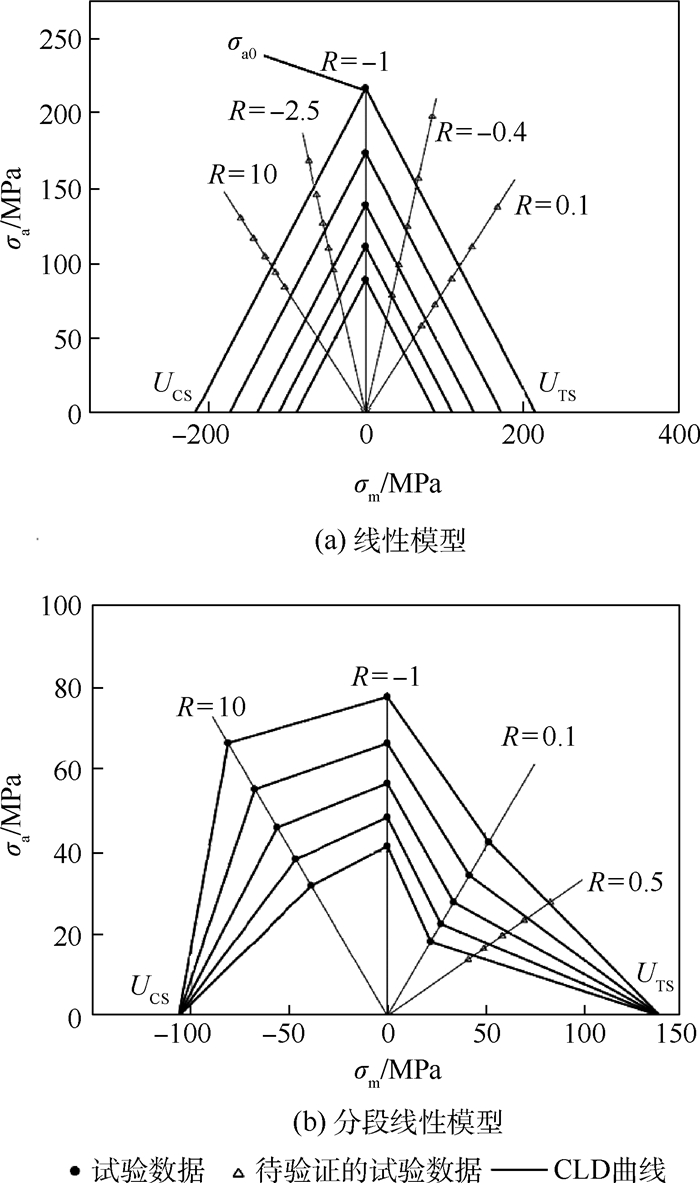

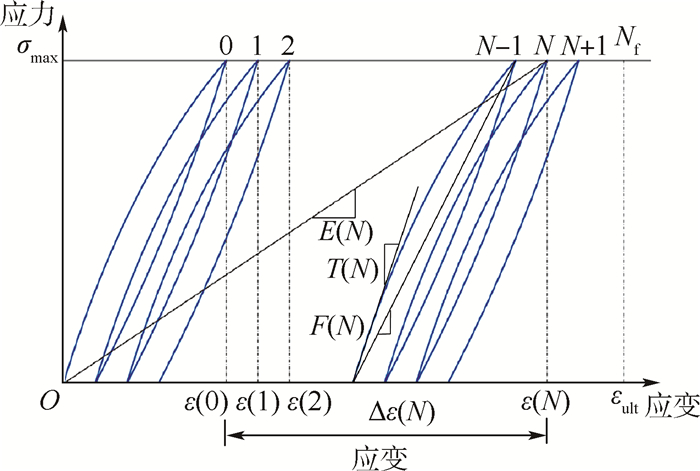

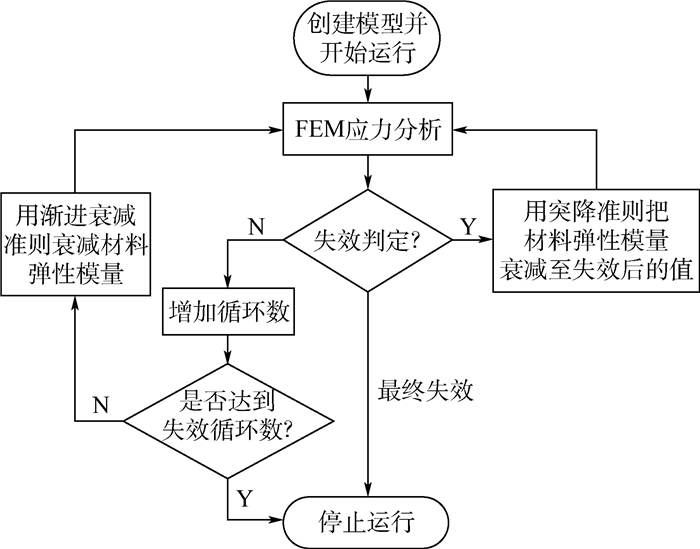
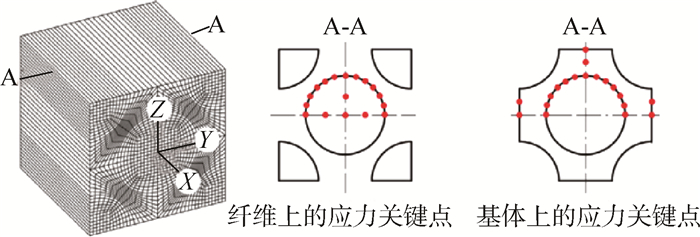
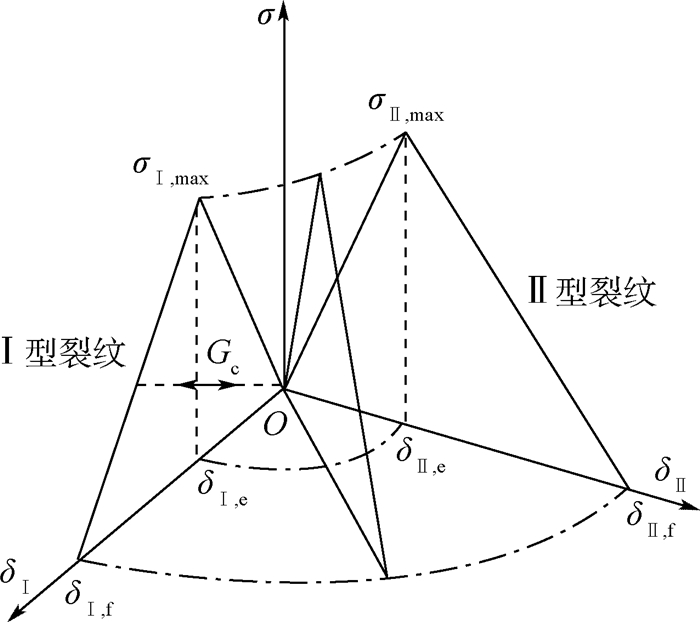
 百度学术
百度学术

